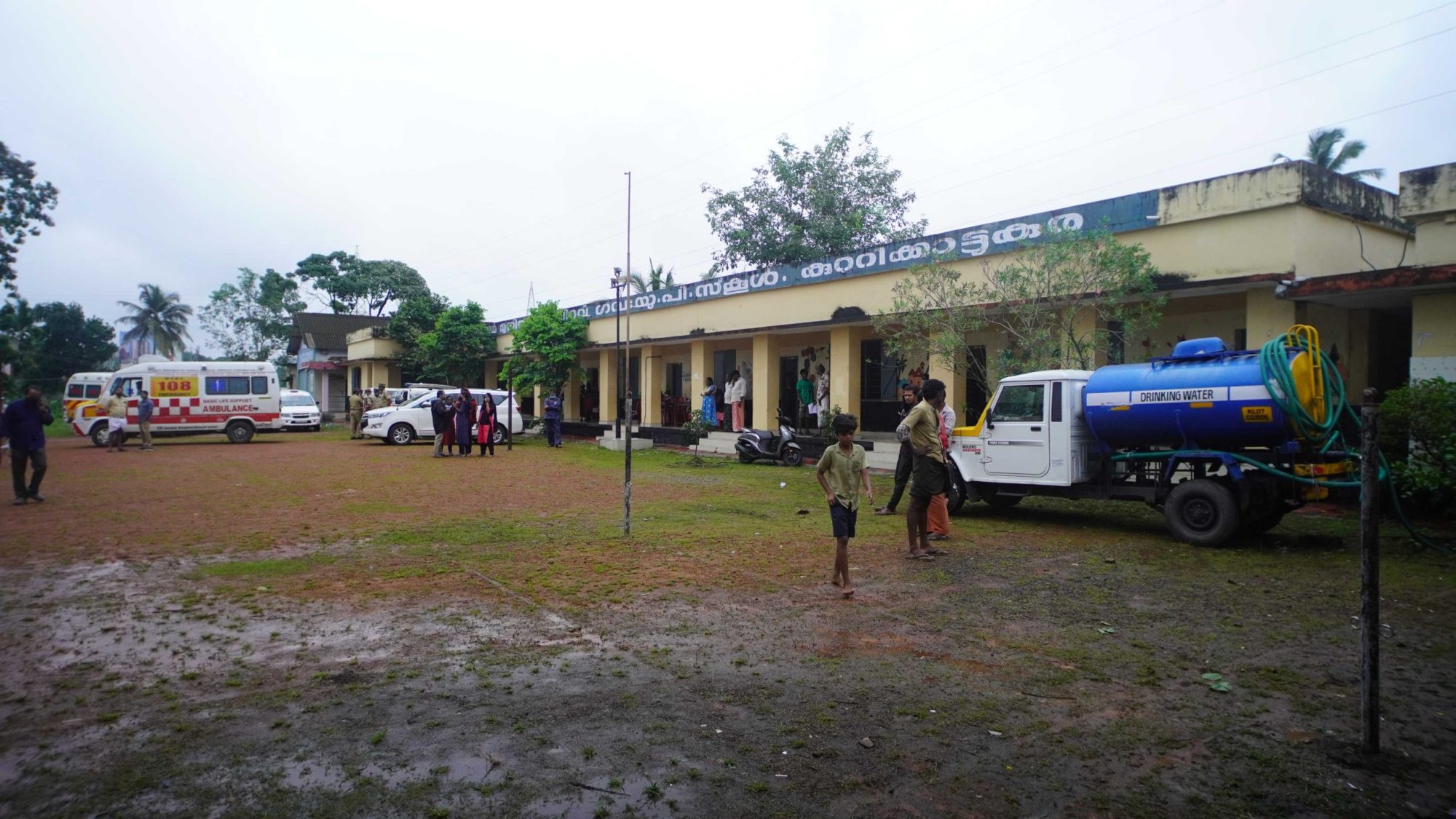While they are happy in the camp, these elderly women wonder whether they will ever see a permanent solution to the annual flooding.

The government school in Eloor is converted into a relief camp every year. (PS Sreerag/South First)
Angelo and Pushpamma, two elderly women, visit the government school in Kuttikattukara, Eloor, for only two reasons.
One, during an election, when the school becomes a voting centre. And two, when it is turned into a make-shift relief camp whenever the Periyar river overflows its banks and enters homes in the area, now an annual feature.
“As soon policemen and others asked us to shift, we shifted to the camp. When the water enters our houses, leeches and snakes enter along with it, and I am scared of them. We come to this school every monsoon to be in the relief camp,” Angelo told South First.
There are four relief camps in Eloor, near Kochi city, accommodating families affected by the floods in the area. Located adjacent to the Periyar, Eloor is a low-lying town in Ernakulam district that is below the sea level.
The Eloor camps were ready even before the monsoon broke over the state as the municipality and the local panchayat were well aware that the low-lying areas are inevitably flooded almost every year.
South First‘s visit to one of the camps coincided with that of Minister for Industries, Law and Coir P Rajeev. Rajeev, an MLA who represents the Kalamassery constituency, told reporters that “there is no need to panic at the moment. In the Kalamassery constituency alone, 68 heavy machines are used to clean up small streams that drain water into the river. The camps here were started as a precautionary measure.”
The water-logging in Kochi city is a major issue at the moment and high-level meetings are underway to find a solution, Rajeev said.
In disaster-management efforts, the administration here depends also on those involved with Kudumbasree — the popular poverty eradication and women empowerment programme in the state — and a voluntary group of youngsters called Team Kerala. It comprises members under the age of 25, who help authorities when any hazardous situation arises in the state.
In the relief camp in Kuttikattukara, around 10 members of Team Kerala were engaged in cooking meals for the residents.
Angelo and Pushpamma live in two-cent and three-cent plots, respectively, in a locality adjacent to the Periyar. Despite the hassle of shifting out of their houses each monsoon, both shared their satisfaction with the services provided by the administration in the relief camp.
However, both women spoke of the need for a long-term solution to their annual crisis.
Asked whether they would move to a different locality if the government relocated them elsewhere, both said they would. But they are yet to hear of any such proposal.
“There are areas that are flooded by even minor rain, and then there are people living in areas that are prone to landslides. If there are many such areas where no alternative solutions are possible, we will look into special projects for rehabilitation,” Minister Rajeev told South First.
Eloor is also part of an industrial belt which has companies like Fertilisers and Chemicals Travancore Ltd, Hindalco, Indian Rare Earths Ltd, Hindustan Insecticides Ltd, and several other companies producing and using chemicals and chemical products.
Purushan Eloor, a social activist who is vocal about the issue of flooding in the region, recounted the situation during the floods that happened in 2018.
“In Eloor, there was a situation where chemical waste flowed into people’s houses during the flooding. As these chemicals are corrosive, the walls of my home were decayed due to acidity. The electric parts, including the wires, were damaged due to chemical exposure.”
“This is when we realised that what we were witnessing was a toxic flood,” he said.
Purushan, however, concedes that effective measures are being taken by the local self-governments in Eloor to reduce flooding, especially the clearing of silt from the minor brooks that join the river.
But like Angelo and Pushpamma, he too wonders whether a day will come when the relief camps are not needed.

Jul 26, 2024

Jul 26, 2024

Jul 25, 2024

Jul 25, 2024

Jul 25, 2024

Jul 24, 2024